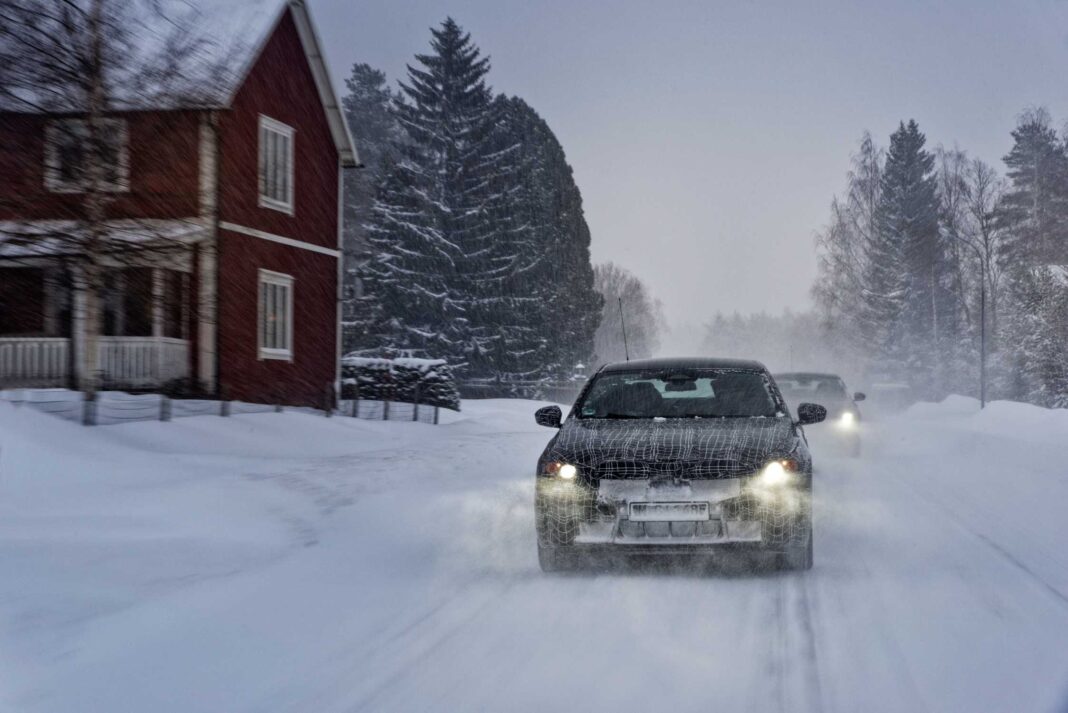
Munich. The first-ever BMW 5 Series with a fully
electric drive system has yet to make its global debut, but it has
already come through the ultimate endurance test. The new BMW i5
repeatedly demonstrated both the stability of its electric powertrain
and its dynamic performance qualities over the course of arduous test
drives in wintry conditions. The programme of testing on ice and snow
lasted about a year in all, from the initial test runs to the final
stages of fine-tuning. During the extensive testing on country roads,
motorways and specially prepared test tracks, the development
engineers mainly focused their attention on the car’s ability to drive
at low temperatures and on surfaces offering little grip.
The innovative powertrain and chassis control systems on board the
new BMW i5 do a great deal to optimise its traction, dynamism and
driving stability, and nowhere is this more apparent than on a solid
blanket of snow, icy mountain roads or frozen lakes. It was only right
that the dynamic winter testing of the purely electrically powered
sedan recently finished exactly where it began: in the biting cold of
the BMW Group’s winter test centre at Arjeplog, northern Sweden.
Endurance test for BMW eDrive technology, operating
continuously at extreme sub-zero temperatures.
As part of the production development process, the new BMW i5 first
had to prove its mettle back in February 2022, when it completed a
road trip from Munich to the BMW test centre at Arjeplog. A prototype
model of the all-electric BMW 5 Series fully camouflaged with a
special wrap, plastic attachments, grilles and provisional headlights
and rear lights set off on a five-day test drive from the foothills of
the Bavarian Alps up to Denmark, then on to the edge of the Arctic
Circle in Swedish Lapland.
The journey of around 3,000 kilometres (1,850 miles) provided an
early opportunity for the motors, power electronics, high-voltage
battery and integrated heating and cooling system for the cabin and
battery pack to demonstrate their advanced level of readiness on a
long-distance journey. Featuring cutting-edge battery cell technology
and intelligently controlled thermal management, the fifth-generation
BMW eDrive technology – further upgraded for the new BMW i5 – forms
the basis for long ranges and short charging times during breaks in
the journey, even in extreme sub-zero ambient temperatures.
- See photo set 1
The final destination of Arjeplog provided the team of development
and test engineers with the ideal venue for their test programme. The
snow-covered roads and frozen lakes of northern Sweden, with their
vast expanses of ice, create the perfect setting for exploring how the
chassis components, steering and braking systems, and driving dynamic
and driving stability systems all interact with one another in extreme
outdoor conditions. As a result, the groundwork for the authoritative,
assured and characteristically sporty handling of the new BMW i5 were
already laid in the first test drives in Arjeplog.
- See photo set 2
Testing in everyday driving and on wintry roads in the
foothills of the Alps.
This was followed by more testing over the course of 2022, both at
other
BMW Group test facilities and in everyday driving in and
around Munich as well as in the vicinity of BMW Group Plant
Dingolfing. The task here was to continue refining the car’s chassis
technology and acoustic properties under a wide variety of conditions,
as well as honing the drive unit’s power delivery, in order to produce
a well-resolved driving experience at all times.
Here again, part of the development work was deliberately carried out
during the colder months on icy and snowy roads in the Alpine
foothills. This last winter, BMW i5 prototypes – now sporting less
camouflage and near-production headlights – were regularly sent out
for testing to verify the functionality and reliability of their
powertrain and chassis control systems in extremely demanding road and
weather conditions. The BMW engineers involved in the vehicle project
were able to directly inspect the current state of development through
testing in the BMW brand’s native Bavaria before it was time to return
to endurance testing near the Arctic Circle in February 2023.
- See photo set 3
BMW i5 thrills with its unrivalled handling on ice and snow.
The purpose of this second round of testing in Sweden was to
fine-tune all powertrain and chassis control systems. Thanks to their
low-grip surfaces, the test areas sited on frozen lakes around
Arjeplog were particularly well suited for delicately adjusting the
drive torque control system in the BMW i5 under precisely reproducible
conditions. In the new BMW i5, the DSC (Dynamic Stability Control)
system, the near-actuator wheel slip limitation function and the drive
torque control system are interlinked so that they can interact and
complement each other flexibly in any driving situation. As a result,
the all-electric sedan performs at least as proficiently as any
conventionally powered model on ice and snow.
The integrated application of all powertrain and chassis systems
underpins the outstanding handling abilities displayed by the BMW i5
in winter testing. The more challenging the conditions, the more
impressive were the speed and precision of the control systems in the
fully electric version of the new BMW 5 Series Sedan. The BMW i5
serves up a harmonious blend of optimum traction when pulling away and
supreme driving stability when cornering or braking, which is unique
in the competitive environment.
- See photo set 4



![[Toyota Times] Toyota Takes Top 5! Behind the Scenes of the Rally Finland Triumph](https://www.miamicars.com/wp-content/uploads/2025/09/newscast_145_1280_720_en-218x150.jpg)


![[Toyota Times] Summer Days for Safety – Considering “What we can do right now” To Reduce Accidents](https://www.miamicars.com/wp-content/uploads/2025/08/newscast_141_1280_720_en-218x150.jpg)








